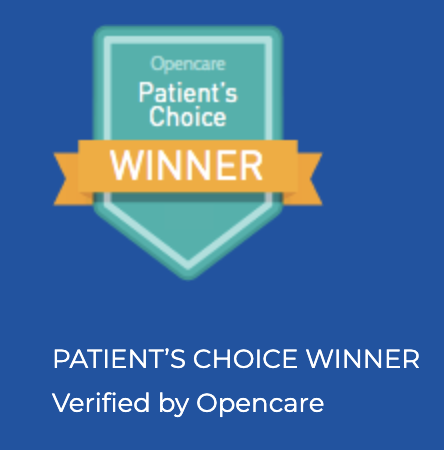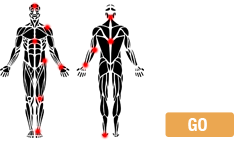Treating pain that no one else can fix

When your life is affected by a musculoskeletal issue, the problem doesn’t just stem around the painful area. Your body may suffer from strains and pains that cause joint pain, debilitating headaches or simple exhaustion after a long day of work. At Physioactive Orthopaedic & Sports Injury Centre, our goal is to improve your quality of life by addressing all of your aches and pains with long term solutions.
Why is the Physioactive approach different?
Physioactive uses the most up-to-date scientific literature to guide our treatment. Evidenced-based research has found that a “multi-modal approach” (using hands-on therapy in conjunction with exercise and modalities) to therapy has been shown to be the most effective. Our therapists have an advanced knowledge of the body’s healing system and its implications through the different stages of rehab. This allows our highly trained team to achieve great long term results with even the most difficult of cases where others have failed. Using a unique and evidence-based scientific approach to therapy, we determine the most significant physical impediments standing in the way of your recovery.
Our manual therapists use soft touch and hands on therapy to improve the mobility of your joints, fascia, muscles, and nerves. We combine exercises to integrate these changes. If applicable our therapists may include treatment modalities such as magnetic biostimulation, laser, ultrasound, acupuncture, and IMS.
When ready, a series of neural exercises are performed and a scientifically measured and monitored exercise protocol tailored to you is begun. You must be committed to see the results.
First gear: fat burning. The body is able to run for long periods of time by burning fat. This primarily builds the mitochondria, Expands the capillary beds allowing more blood to get to the muscle. This is achieved at 60 to 65% of maximum heart rate and should be the starting point for most.
This is the zone where steady, low-grade C -10 drives the slow, consistent growth of infrastructure: blood vessels and mitochondria and your muscles; repair and health throughout your body. You become more fit with her exercise, but you gain more endurance and general healthiness with prolonged light exercise.
The real benefits of exercise come with months and years of sustained, steady growth.
Second gear: Begins when you pass 65% (Ideally 70-85% ) not great for mileage but great for speed and power. You keep burning a low level of fat in the background but the extra fuel comes from the glucose. When you reach 80% of maximum heart rate, glucose metabolism kicks in. This also kicks in your brain, mental function, excitement and challenge. This also triggers a major metabolic shift that affects your muscles, brain, gut, immune system, kidneys, liver, heart and lungs. If you’re metabolizing or burning glucose, you must be in a primal historic “hunting” mode, which triggers a major metabolic shift that affects your muscles, brain, gut, immune system, kidneys, liver, heart and lungs. Adrenaline and C-6 surges, and nonessentials shut down as blood is delivered to active muscles. You become engaged and alert.
Third-gear: Anaerobic exercise. Generally not that useful to train especially for the elderly and those in pain.
Starting exercise:
Your joints are the weakest link so watch out. You must start in first gear with a supervised, low impact aerobic component to secrete C 10 and begin the building and repair of your joint cartilage and engage the neuromuscular system.
At Physioactive we use 210 or 220 – your age to estimate maximum heart rate depending on the physical signs you exhibit. Our specially trained exercise specialist will use other tools to estimate your max heart rate.
Once in shape you can calculate your real max HR. That only comes after months or years of daily training. The pace you can maintain for only 60 seconds or so, going flat out. Don’t get to your actual maximum.
Long-term goal:
5 to 10 minutes warm-up at 60 to 65% max then 10-20 minutes at 70-85%. Goal: an hour at 70 to 85%
Strength training refers to the ability of your muscles ability to deliver power, which, surprisingly, has as much to do with neural coordination than actual strength. Strength training causes muscle growth, and that’s important, but it’s the hidden increasing neural coordination that changes your physical well-being. It’s the coordination of neural input from the brain and spinal cord to individual fibres comprising muscles that form the mind-body connection. Depending on your level, lower forms of neural connecting may be necessary before beginning any exercise program. Your experienced Physioactive therapist will be able to assess and determine your individual starting point. Typically, those in chronic pain fail because the exercise programs are not tailored to the individual and the program is too hard causing neural fatigue or joint injury.
We aren’t always aware of nerve decay as we get older and after injury – however, it’s the main reason our joints wear out, our muscles get sloppy, and our ability to physically be alert and powerful begins to fade. This same nerve decay, also referred to as a neuropathy, is also the primary reason for neuropathic or nerve-related pain. This process is reversible with our combination of manual therapy, neural exercises, aerobic and strength training.
Why we include resistance training:
The casual motion of daily life is not enough to turn on all of the millions of neural networks in your body. Your body grows and your brain adapts to each movement but because C-6 is in the background helping you degrade just a little bit each day. The casual motion of daily life is not enough to turn on the cytokines of growth. This slowed degradation of brain connections and the controlling spinal reflex arcs get slow after years of sedentary existence. It takes a critical amount of effort to cross the threshold to the secrete enough C- 6 to trigger the production of C 10.
How do we scientifically measure your improvement:
Borg – same initial test (i.e. bike level and rpm or treadmill
What types of conditions does this unique approach help?
- Tendonitis or more accurately described as tendonosis
- Chronic pain
- Fibromyalgia
- Cardiac rehab (the same messengers that begin healing our joints and nerves also heal our arteries)
- Arthritis
- Headaches
- Concussions
- Chronic neck and back pain
- Shoulder and shoulder blade pain
- Poor sleep
- Hormone imbalances
This is not for acute injuries. All of our therapists have great success with a wide variety of injuries ranging from acute injuries to complex sports injuries. We pride ourselves on allowing the body to fully rehabilitate and regenerate so that the healed tissues are as good or better than the original. Any treatment may reduce your symptoms and have you feeling better initially, but the Physioactive difference is the ability to maximize regeneration and thus return to optimal performance and prevent further injury.
Why Choose Physioactive?
Many patients are frustrated with the advice and treatments they’ve been given, and feel that they have nowhere to turn. We recognize the importance of personal interaction, and your questions are always answered by one of our physiotherapists. We provide you with quick access to the most knowledgeable professionals that can help you improve your quality of life.
From massage therapy in the clinic to helpful tips on how to decrease your pain at home, the professionals at Physioactive offer you valuable solutions to problems that may be affecting one or more areas of your life.
Call Us Today
Call us today at 905-695-0371 to set up an appointment to speak with a trained professional that knows how to treat the causes of your pain rather than just masking the symptoms for a few hours. We want to see you living in the body that allows you to achieve all your dreams.


